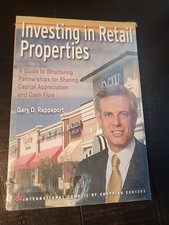Table of Contents
Retail Investor Activity
Top Market Shifts: Retail Investing Cools, FMCG Booms Post-Budget
Retail Investor Activity is expected to cool down significantly in 2025, while the FMCG sector and its valuations are poised for major shifts following the recent budget announcement.
The financial markets are bracing for a significant shift as retail investor activity is projected to cool down in 2025. This comes after a period of heightened enthusiasm and speculative trading, particularly in loss-making companies. But as one door closes, another swings open: the Fast-Moving Consumer Goods (FMCG) sector is poised for a robust resurgence, fueled by post-budget optimism and strategic economic reforms. This dynamic interplay between retreating retail interest and an ascendant FMCG sector sets the stage for a fascinating year in the world of finance.
The Great Retail Retreat: Why Investors Are Pulling Back
After a whirlwind of activity in 2024, where retail investors flocked to the markets, particularly drawn to high-risk ventures, a noticeable pullback is anticipated. Sankaran Naren of ICICI Prudential AMC suggests this cooling trend is a natural correction after a period of exuberant, sometimes irrational, investment behavior. The euphoria that once drove retail investors to chase speculative gains is now giving way to a more cautious, fundamentally driven approach.
This shift isn’t just a matter of market sentiment; regulatory measures are also playing a role. Securities and Exchange Board of India (SEBI) has been actively implementing measures to curb excessive speculation and protect retail investors from undue risks. These measures, while crucial for market stability, are also contributing to the anticipated decline in retail participation. The days of impulsive, high-stakes trading are gradually being replaced by a more measured and strategic investment landscape.
The peak enthusiasm for loss-making companies, which was a hallmark of the 2024 market, is now fading. Investors are becoming more discerning, focusing on companies with solid fundamentals and sustainable business models. This recalibration is a healthy sign for the market, signaling a move towards more rational and less volatile investment patterns. The retreat from speculative investments is not a sign of weakness, but rather a move towards a more mature market environment.
The market dynamics are evolving, and this cooling in retail investor activity is a crucial development to understand. It’s a sign of a market becoming more mature, where fundamentals and long-term value are taking precedence over short-term gains. This means investors will need to be more strategic and informed in their approach, moving away from the high-risk, high-reward mentality of the recent past. The shift is not about exiting the market, but rather about navigating it more wisely.
FMCG’s Post-Budget Bonanza: A Sector on the Rise
While retail investor activity may be slowing, the FMCG sector is experiencing a surge of optimism, largely thanks to the Union Budget 2025-26. The budget has laid the foundation for enhanced consumer demand through pro-consumption tax reforms and significant rural infrastructure investments. Major FMCG players have expressed positive sentiments, viewing the budget as a catalyst for growth and expansion. This is not just a fleeting optimism; it is a belief that the budget will create sustainable growth opportunities.
The budget’s emphasis on rural development is particularly significant for the FMCG sector. By strengthening rural infrastructure, the government aims to enhance agricultural productivity and increase the purchasing power of rural consumers. This focus on rural markets is crucial, as these regions represent a large and untapped consumer base for FMCG companies. Increased rural prosperity will translate to greater demand for everyday consumer goods, driving the sector’s growth trajectory.
Key FMCG players are advocating for further income tax slab revisions, aimed at increasing disposable income, especially among the middle class. This would not only stimulate demand across various consumer categories but also provide a more stable economic foundation for the sector. A higher disposable income means more spending, and this is exactly what the FMCG sector needs to thrive. The budget is setting the stage for a consumer-led economic boom.
Shares of FMCG companies have already begun to reflect this optimism, with some rallying by up to 7% on the NSE following the budget announcement. This investor confidence is a testament to the sector’s growth potential and the positive impact of the budget on consumer sentiment. The FMCG sector is not just a beneficiary of the budget; it’s a key driver of economic activity, with its growth expected to reverberate across the entire economy. This is the beginning of a new era for FMCG.
Valuation Check: Are Small and Mid-Caps Overheated?
As the market recalibrates, concerns about inflated valuations, particularly in small and mid-cap stocks, are growing. Many of these stocks are currently trading at price-to-earnings (P/E) ratios that do not align with their underlying fundamentals. This disconnect between market price and intrinsic value is a red flag, signaling a potential correction. The market is not just about growth; it’s also about sustainability, and these valuations are raising questions about the long-term viability of some investments.
Sankaran Naren has warned of a potential 20-30% correction in these segments, a stark reminder that the market can be unforgiving to those who chase hype over substance. This potential correction is not a doomsday scenario, but rather a necessary adjustment that will bring valuations back in line with the real worth of these companies. Such corrections, though painful in the short term, are essential for the long-term health of the market.
Investors need to be particularly cautious about stocks that have seen dramatic price increases without corresponding improvements in their financials. A careful analysis of the underlying business is crucial before making investment decisions. The market is not a game of chance; it’s a game of informed strategy and diligent research. The time for reckless speculation is over; now is the time for prudent investment.
This isn’t to say that all small and mid-cap stocks are overvalued, but rather that investors need to be more selective and discerning. The focus should be on companies with robust business models, strong cash flows, and a clear path to profitability. The market rewards those who do their homework and make informed choices, not those who blindly follow the herd. This correction, if it occurs, will likely separate the wheat from the chaff, revealing the true value of these companies.
Tax Tweaks and Consumer Spending: What the Budget Means for Your Wallet
The proposed income tax slab revisions are a critical component of the budget, with significant implications for consumer spending. By increasing disposable income, particularly for the middle class, the government aims to fuel demand across a wide range of consumer goods. This is a strategic move to stimulate economic activity, as increased spending by the middle class often has a multiplier effect on the economy. The budget is not just about numbers; it’s about empowering consumers to drive economic growth.
The middle class, a key demographic for the FMCG sector, is expected to benefit the most from these tax reforms. With more money in their pockets, they are more likely to spend on non-essential goods and services, further boosting demand for FMCG products. This is not just about short-term gains; it’s about creating a sustainable cycle of consumption and economic growth. The ripple effect of increased consumer spending will be felt across the economy.
These tax revisions are not just about providing immediate relief; they’re about fostering a culture of spending and investment. When consumers have more confidence in their financial stability, they are more likely to participate actively in the economy. This renewed confidence can lead to increased purchases, investments, and an overall improvement in economic sentiment. The budget is aiming for a positive feedback loop of consumer spending and economic growth.
The impact of these tax reforms goes beyond just the FMCG sector; they have the potential to stimulate growth across various sectors. Increased consumer spending will lead to higher demand for goods and services, which in turn will drive production, create jobs, and spur economic activity. The budget is not just a financial document; it’s an economic roadmap that aims to empower consumers and propel the economy forward. This is a strategic approach to fostering inclusive and sustainable economic growth.
Rural Revival: How Infrastructure Investments Fuel FMCG Demand
The budget’s focus on strengthening rural infrastructure is a game-changer for the FMCG sector. Investments in roads, transportation, and communication networks are set to enhance agricultural productivity and, more importantly, boost the purchasing power of rural consumers. This is a strategic move to unlock the vast potential of rural markets, which have long been underserved. The infrastructure push is not just about connectivity; it’s about creating economic opportunities in rural areas.
Improved infrastructure will enable better distribution networks, allowing FMCG companies to reach remote rural areas more efficiently and cost-effectively. This improved access will not only increase sales volumes but also reduce logistical costs, making products more affordable for rural consumers. The focus is on creating a seamless supply chain that brings products from factory to rural consumers without hurdles. This will create a win-win situation for both companies and consumers.
The increase in rural purchasing power will translate directly into higher demand for FMCG products. As rural economies grow, consumers will have more disposable income to spend on everyday goods, driving the sector’s growth. This is not just about selling more products; it’s about improving the quality of life in rural communities. The budget is laying the foundation for sustainable economic growth in rural areas, which will benefit the entire nation.
This rural focus is essential for long-term growth, as it opens up a new frontier for FMCG companies. By tapping into the rural market, these companies can diversify their customer base and reduce their reliance on urban centers. This strategy is not just about short-term gains; it’s about building a more resilient and inclusive economy. The budget’s emphasis on rural development is a crucial step towards achieving balanced and sustainable economic growth.
Navigating Market Volatility: Strategies for Smart Investing in FMCG
Amidst the expected market fluctuations, analysts are advising a “nibble and buy” strategy for FMCG stocks. This approach emphasizes the long-term value potential of these stocks, despite current market volatility and negative news flow. It’s about identifying fundamentally sound companies and gradually accumulating their shares over time, rather than trying to time the market. The market is not a sprint; it’s a marathon, and smart investors know how to pace themselves.
The FMCG sector is considered a defensive play in times of economic uncertainty. Demand for everyday consumer goods tends to remain stable even during economic downturns, making FMCG stocks a relatively safe haven for investors. This stability, however, does not mean that these stocks are immune to market volatility, but rather that they are less susceptible to drastic fluctuations. This is what makes FMCG a smart addition to any diversified portfolio.
Investors should focus on companies with strong brands, consistent cash flows, and a proven track record of profitability. These are the companies that are most likely to weather market storms and deliver long-term value to their shareholders. This is not just about chasing the next hot stock; it’s about investing in companies that have a sustainable business model. The key is to focus on quality, not just quantity.
A diversified portfolio is crucial, especially in times of market uncertainty. Investors should not put all their eggs in one basket, but rather spread their investments across different sectors and asset classes. This diversification reduces the risk of significant losses and allows investors to capitalize on different market opportunities. Smart investing is about managing risk and maximizing returns, and diversification is a key tool for achieving this. The market is full of opportunities for those who are prepared and strategic.
The Price Sensitivity Puzzle: How Consumers Are Changing Their Habits
One of the key challenges for FMCG companies is the increasing price sensitivity of consumers. Sustained inflation has eroded purchasing power, leading many consumers to switch to private label products if they are on sale. This is not just a short-term trend; it’s a fundamental shift in consumer behavior that FMCG companies must adapt to. The era of brand loyalty is giving way to an era of value-conscious purchasing.
Consumers are now more willing to experiment with different brands and products, seeking out the best value for their money. This is especially true in the wake of price increases in branded goods. The competition is fierce, and FMCG companies must be nimble and responsive to these changing preferences. The market is no longer just about selling; it’s about offering value and building trust with consumers.
This trend is forcing FMCG companies to rethink their pricing strategies and find ways to offer more value to consumers. This might include introducing more affordable product lines, offering promotions and discounts, or improving the quality of their private label offerings. The key is to balance profitability with affordability and adapt to the changing demands of consumers. The market is not static; it’s a dynamic environment that requires constant adaptation.
The challenge for FMCG companies is not just about pricing; it’s about understanding the underlying motivations of consumers. By understanding these motivations, companies can develop products and marketing campaigns that resonate with consumers and build lasting relationships. The market is not just about selling; it’s about building relationships and providing value. This is the new paradigm that FMCG companies must embrace to remain competitive.
Beyond the Headlines: Challenges and Opportunities for FMCG Companies
Beyond the post-budget optimism, FMCG companies face ongoing challenges, including changing consumer preferences and the need to innovate. The market is not static; it’s constantly evolving, and companies must be adaptable and innovative to thrive. The key is to move beyond simply meeting current needs to anticipate future demands and trends. The FMCG sector is not just about responding to change; it’s about leading it.
However, these challenges also present significant opportunities for growth. The integration of investments in manufacturing capabilities and supply chain improvements can lead to greater efficiency and cost savings. This will help companies to be more competitive and increase their profit margins. The market is full of opportunities for those who are willing to invest and innovate. The key is to see the challenges as opportunities for growth.
FMCG companies are advised to adopt new strategies that focus on balanced growth and smart pricing to navigate current market challenges effectively. This approach involves a mix of innovation, cost management, and a deep understanding of consumer behavior. The market is not about short-term gains; it’s about building sustainable businesses that can thrive over the long term. The key is to balance short-term goals with long-term vision.
The future of the FMCG sector depends on its ability to adapt to these challenges and capitalize on emerging opportunities. This will require a combination of strategic planning, innovative thinking, and a strong focus on the needs of consumers. The market is constantly evolving, and FMCG companies must be agile and adaptable to succeed. The future belongs to those who can anticipate and adapt to change.
Investor’s Playbook: What to Watch Out for in the Coming Months
As we move into the coming months, investors should remain vigilant and informed. The market is expected to remain volatile, with potential corrections in overvalued sectors. This is not a time for reckless speculation but rather for careful analysis and strategic planning. The market is not just about making quick profits; it’s about building long-term wealth through informed decision-making.
Investors should keep a close watch on the FMCG sector, as it is poised for growth, but they must also be aware of the challenges faced by the sector. A diversified portfolio and a long-term investment horizon are essential for navigating these uncertain times. The market is full of opportunities for those who are prepared and strategic. The key is to remain disciplined and avoid emotional decision-making.
The cooling of retail investor activity is not necessarily a bad thing; it’s a sign that the market is maturing. It’s a reminder that investing is a marathon, not a sprint, and that long-term value should be the primary focus. The market is not just about chasing the next big thing; it’s about building wealth through informed and strategic decisions. This is a time for prudent investment and disciplined financial planning.
In conclusion, the financial landscape is shifting, with retail investor activity cooling down and the FMCG sector poised for growth. While this shift presents challenges, it also offers opportunities for investors who are strategic and informed. By understanding these market dynamics, investors can navigate the complexities of the market and build long-term wealth. The market is always changing, and the key to success is to remain informed, adaptable, and disciplined. Join the conversation below and share your views. What are your predictions for the market?
By: Liam Foster (@LiamWritesNews) for NewsBurrow Network
As we’ve explored the evolving landscape of retail investor activity and the exciting potential within the FMCG sector, it’s clear that navigating these market shifts requires a strategic and well-informed approach. The era of impulsive trading is fading, making way for a more thoughtful and disciplined investment style. Understanding the nuances of market trends and having the right tools at your disposal is more crucial than ever for achieving your financial goals.
Whether you’re a seasoned investor or just beginning your journey, now is the time to equip yourself with the resources and knowledge necessary to make smart decisions. From comprehensive investment courses to cutting-edge analytical platforms, there’s a wealth of information and tools available to help you take control of your financial future. We encourage you to explore these options and discover the potential they hold for enhancing your investment strategy. Dive deeper into the world of retail investing and uncover the opportunities that await.
Ready to take the next step? We invite you to explore our curated selection of top-rated investment resources designed to empower you on your journey. And don’t forget to share your insights and opinions in the comments below; your participation enriches our community. Stay ahead of the curve by subscribing to our NewsBurrow newsletters for the latest market updates and expert analysis. Your financial success starts with informed decisions—let’s embark on this journey together.
Shop Products On Amazon
Shop Products on Ebay









Trending Similar Stories in the News
Retail investor activity set to cool, but FMCG sector and valuations could see major shifts post-Budget: S Moneycontrol...
Retail Investors Snap Up Tech Stocks Despite Market Selloff Finimize...
Trending Videos of Retail Investor Activity
2025 Budget Analysis & Stock Market | Akshat Shrivastava




GIPHY App Key not set. Please check settings